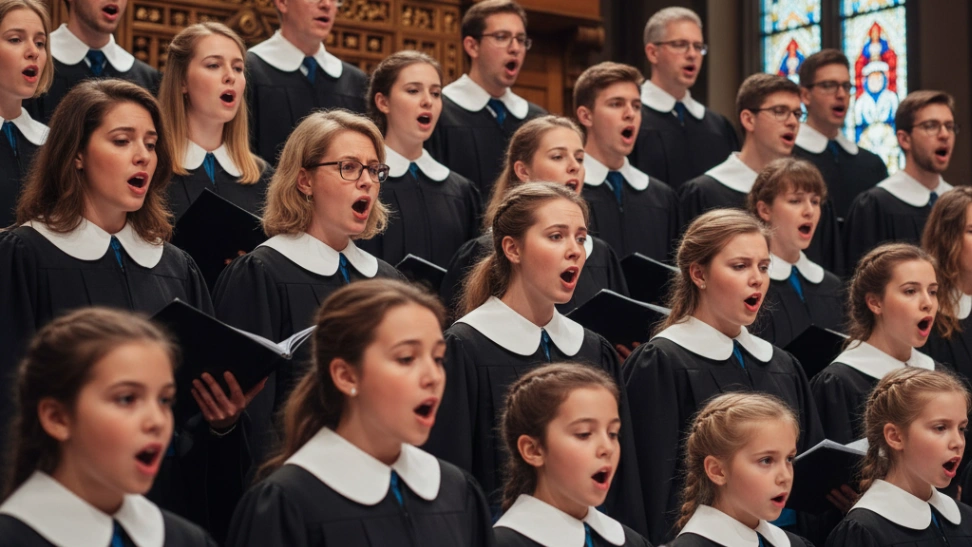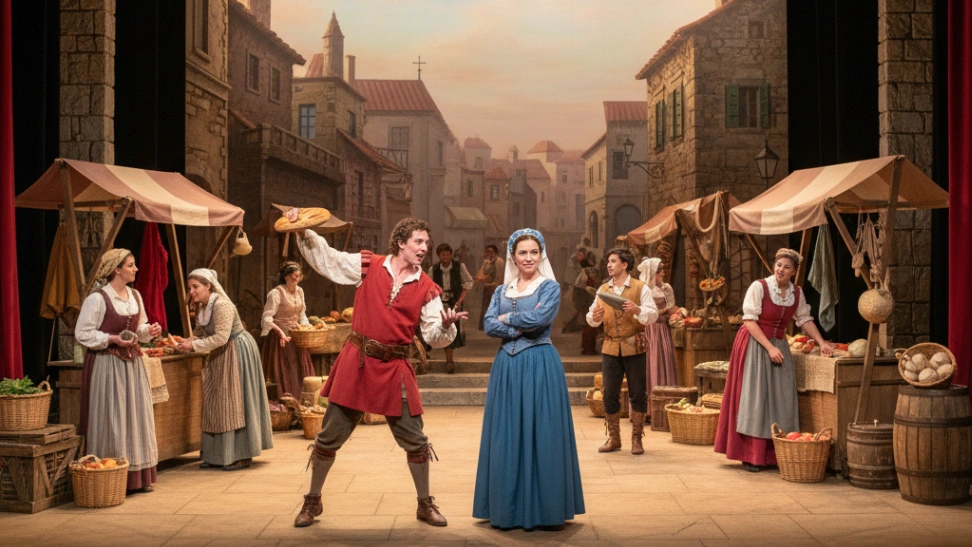The origins of communal singing are deeply embedded in human history, predating formal musical notation and extending into the earliest known human societies. Across ancient civilizations, group singing served vital roles in religious rituals, storytelling, collective labor, communal celebrations, and expressions of grief. Archeological and historical evidence suggests that early forms of organized chant were present in Mesopotamian temples and ancient Egyptian ceremonies. However, the Western tradition of choir singing, as we largely recognize it today, found its most significant foundational development within the early Christian church. The evolution of Gregorian chant, a monophonic sacred song, began to take distinct shape in the Roman Catholic Church around the 6th century. This laid the essential groundwork for more complex vocal arrangements. By the 9th and 10th centuries, the groundbreaking concept of polyphony—the simultaneous combination of two or more independent melodic lines—emerged, drastically expanding the expressive possibilities for vocal ensembles. This innovation was a turning point, allowing for the creation of intricate textures and harmonies that define much of subsequent choral music. Throughout the subsequent centuries, choral music flourished and diversified immensely: from the intricate motets and expressive madrigals of the Renaissance, which showcased humanistic themes and sophisticated counterpoint, to the monumental oratorios and cantatas of the Baroque era, often involving large forces and dramatic narratives. The grand symphonic choirs of the Romantic period pushed boundaries of scale and emotion, while the 20th and 21st centuries have seen an explosion of diverse choral expressions, incorporating jazz, folk, pop, and experimental techniques. This continuous evolution across millennia powerfully demonstrates a fundamental and enduring human desire to connect, communicate, and create shared artistic beauty through the collective power of the human voice.
Participating in a choir offers a unique and multifaceted path to both personal growth and collective artistic achievement. Individually, singers undergo significant vocal development, refining essential skills such as enhanced breath support, improved vocal resonance, precise pitch accuracy, and extended vocal range. They often deepen their understanding of music theory, interpretative dynamics, rhythmic precision, and the intricate nuances of musical expression. The challenging yet rewarding act of learning new pieces, memorizing complex lyrical texts, and mastering elaborate harmonies actively sharpens various cognitive functions, including memory retention, sustained focus, and pattern recognition. Beyond these technical and intellectual aspects, singing functions as a profound emotional outlet, enabling individuals to articulate, convey, and experience a vast spectrum of feelings through the powerful medium of music. It is frequently recognized as a therapeutic endeavor, known for its capacity to significantly reduce stress levels, alleviate anxiety, and promote overall mental and emotional well-being. The constant challenge of contributing one's very best vocal effort while simultaneously listening intently and adapting seamlessly to the collective sound of the ensemble pushes singers to refine their self-awareness, their auditory discernment, and their overall musical sensitivity, fostering a deeper connection to the art form and to themselves.
The social dimension of choir singing is perhaps its most compelling and transformative aspect. A choir, by its very nature, is a deeply collaborative team effort, demanding continuous cooperation, acute active listening skills, and unwavering mutual support among its members. Singers learn to synchronize not only their individual voices but also their interpretative approaches, their dynamic contrasts, and their emotional expressions to form a cohesive whole. This shared dedication to a common musical goal inherently builds exceptionally strong bonds and genuine camaraderie among members, forging a supportive and often lifelong social network. Many choirs actively engage in public performances, whether for intimate local communities, grand religious services, or formal concert hall productions. These performances provide a powerful sense of shared accomplishment, a unique platform for collective artistic expression, and an opportunity to connect with an audience. The sheer joy and exhilaration of performing live, feeling the resonant energy of an appreciative audience, and sharing the culmination of weeks or even months of dedicated rehearsal and hard work is an incredibly rewarding and validating experience that profoundly strengthens the collective identity and spirit of the group, leaving a lasting impact on everyone involved.
Embarking on the journey of choir singing is generally quite accessible and straightforward, making it an inviting hobby for many. Most communities, regardless of size, offer a diverse range of choral opportunities, from casual church choirs and vibrant community ensembles to more formalized school, university, and even professional groups. For beginners, the entry point often involves a simple audition process, or sometimes, they can simply join an open-enrollment group designed for all skill levels. A significant advantage is that many choirs provide essential learning aids, such as comprehensive sheet music, high-quality rehearsal tracks, and even offer optional vocal coaching or structured workshops as part of the membership, easing the learning process. The path of a choir singer is characterized by continuous learning, vocal refinement, and artistic exploration, with an almost endless repertoire to discover and diverse vocal techniques to master. From the exhilarating sensation of perfectly blending one's voice into a resonant, harmonious chord with dozens of other singers, to the quiet, profound satisfaction of finally mastering a challenging musical passage, choir singing offers a deeply resonant, personally enriching, and enduring hobby that enhances the lives of its participants in countless ways, fostering not only musicality and artistic expression but also strong community bonds and profound personal satisfaction.



